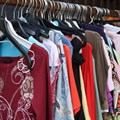
Subscribe & Follow
Jobs
- Retail/Admin Clerk Johannesburg
- Sales Agent Countrywide
Luxury fashion's sustainable future: How pre-owned items are paving the way
This is according to Michael Zahariev, co-founder of Luxity, a South African pre-owned luxury reseller, who highlights that while the rise of the pre-owned luxury industry has been a step towards tackling these challenges, there remain further opportunities for fashion brands and companies to incentivise consumers towards sustainable choices.
"Awareness around the concept of circular fashion, an offshoot of the broader circular economy aimed at minimising waste and maximising resource efficiency, is growing. It's crucial to understand its potential to disrupt fashion's linear production cycle, which too often culminates in clothes being discarded in landfills."
"Consider this: each new item of clothing generates approximately 9.5kg of carbon emissions, consumes about 39kWh of electricity, and wastes roughly 297 litres of water,” he elaborates. “In stark contrast, a pre-owned garment generates less than 2kg of carbon emissions, consumes under 5 kWh of electricity, and uses just 4.5 litres of water."
Now, Zahariev says that the industry should pivot towards promoting circular shopping practices, which advocate for clothing rental and resale markets such as second-hand stores and online platforms, along with clothing swaps to extend the lifespan of items beyond a single owner's use.
"For instance, our clientele is evenly split between buyers and sellers, demonstrating strong support for the circular fashion industry. However, those interested in reaping the benefits of circular shopping should consider both buying and selling – customers who buy and sell make up 45% of our revenue, up from 32% a year ago”
“Effectively, customers who buy and sell their items with us are contributing to the growing circular economy by reinvesting their profits from the sale of pre-owned items into more sustainable luxury goods," he explains. “Moreover, when customers sell an item back to us, we ensure they receive a minimum of 70% of their initial purchase price. So, if you buy a bag and use it for a year or so while maintaining its condition, and then decide to sell it back, you'll get at least 70% back."
“As we become increasingly aware of the global and local implications of climate change, with our country witnessing a surge in extreme weather events and their devastating aftermath, the imperative for action has never been clearer,” says Zahariev who refers to the President’s recent State of the Nation Address, which highlighted the significance of curbing carbon emissions and combating climate change.
“For fashion enthusiasts, there's now a tangible opportunity to contribute positively to the environment without having to sacrifice their style. Let's embrace this chance to reshape the narrative of the fashion industry and pave the way toward a greener, more responsible future. In the words of Stella McCartney, ‘the future of fashion is circular, it has to be,'" he concludes.
Related
Upcyclers - mind your IP and Qs when repurposing branded clothing 25 Feb 2025 Africa's luxury goods markets emerge as a powerhouse 18 Feb 2025 Old Khaki and The Street Store join forces to promote sustainable fashion 13 Feb 2025 Nairobi Fashion Week 2025 puts regenerative fashion in the spotlight 11 Feb 2025 Stadio School of Fashion brings sustainable style to Mall of Africa 25 Nov 2024 The 2024 Twyg Sustainable Fashion Awards winners revealed 22 Nov 2024 Africa’s luxury market defies economic pressures 22 Nov 2024 All the 2024 Twyg Sustainable Fashion Awards finalists 18 Nov 2024










